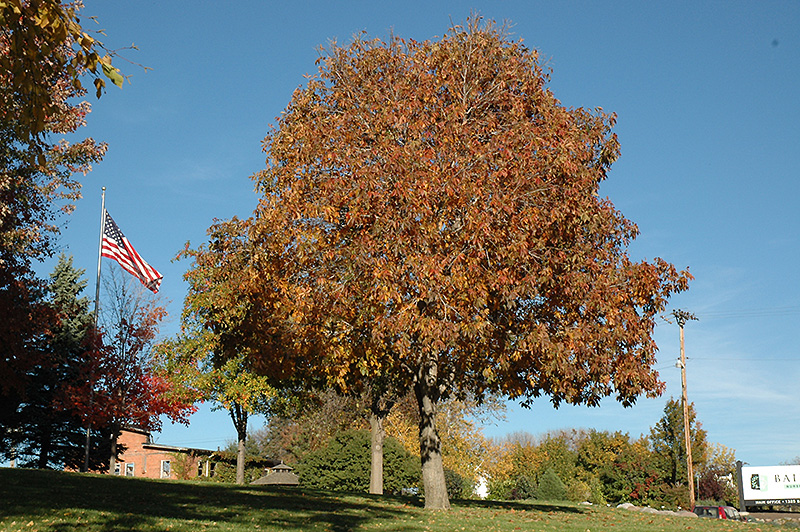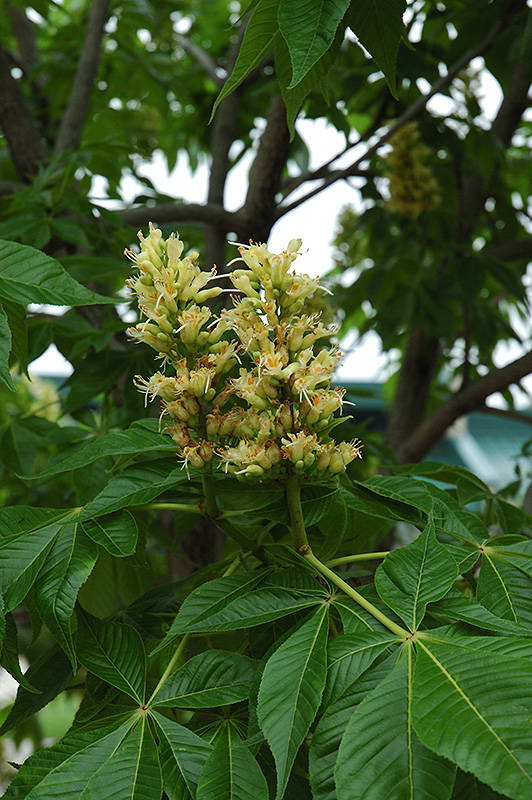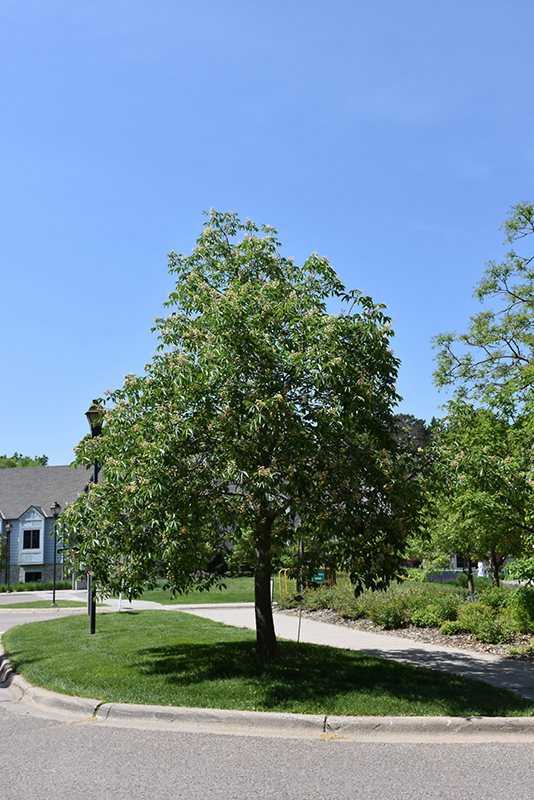Horse Chestnut, Autumn Splendor Aesculus 'Autumn Splendor' Height: 35 feet Spread: 30 feet
Sunlight:
Hardiness Zone: 3b Description: An interesting new small accent tree for home landscape use, selected primarily for its outstanding fall color, yellowish-green flowers and rounded growth habit, a distinct improvement over species; spiny seeds may necessitate some maintenance Ornamental Features Horse Chestnut, Autumn Splendor features showy spikes of creamy white flowers rising above the foliage in late spring. It has dark green deciduous foliage. The palmate leaves turn an outstanding tomato-orange in the fall. However, the fruit can be messy in the landscape and may require occasional clean-up. Landscape Attributes Horse Chestnut, Autumn Splendor is a dense deciduous tree with a more or less rounded form. Its relatively coarse texture can be used to stand it apart from other landscape plants with finer foliage. This tree will require occasional maintenance and upkeep, and is best pruned in late winter once the threat of extreme cold has passed. It is a good choice for attracting birds and butterflies to your yard, but is not particularly attractive to deer who tend to leave it alone in favor of tastier treats. Gardeners should be aware of the following characteristic(s) that may warrant special consideration; Horse Chestnut, Autumn Splendor is recommended for the following landscape applications; Planting & Growing Horse Chestnut, Autumn Splendor will grow to be about 35 feet tall at maturity, with a spread of 30 feet. It has a high canopy of foliage that sits well above the ground, and should not be planted underneath power lines. As it matures, the lower branches of this tree can be strategically removed to create a high enough canopy to support unobstructed human traffic underneath. It grows at a medium rate, and under ideal conditions can be expected to live for 60 years or more. This tree does best in full sun to partial shade. It prefers to grow in average to moist conditions, and shouldn't be allowed to dry out. This plant should be periodically fertilized throughout the active growing season with a specially-formulated acidic fertilizer. It is not particular as to soil type or pH. It is highly tolerant of urban pollution and will even thrive in inner city environments. This particular variety is an interspecific hybrid, and parts of it are known to be toxic to humans and animals, so care should be exercised in planting it around children and pets. Special Attributes The Horse Chestnut trees have flowers that attract bees and butterflies, but are deer resistant. Horse Chestnut (Aesculus) are considered toxic, the nuts and twigs cause stomach issues.![]()
![]()
![]()
![]()
![]()
![]()
![]()
![]()
![]()
![]()
![]()



